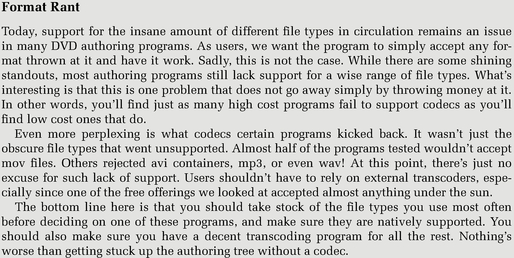72
DVD Authoring Buyer's Guide
Peter Zunitch

Figure 72-1
What to Buy, What to Know
I had a simple goal: authoring a DVD. It’s something I’ve done hundreds of times over the past eight years; not a big deal. Typically there are at least three programs capable of making a DVD on my system at any given time. The trouble is none of them were capable of making the DVD exactly the way it needed to be done. Each of them was missing some functionality that prohibited continuing. It seemed like I was stuck.
Then it occurred to me that my most recent program hadn’t seen any updates in over four years. It had come bundled with my editing software (which in itself usually means reduced functionality than the full retail version). There must be a more recent, more functional version out there. Surely others are looking for the perfect solution as well? The market landscape has changed a lot in the past few years. Companies have folded, merged with others, or canceled product lines. It’s a whole new authoring world. So the quest for an answer had begun. In this stage of DVD’s reign, is there one piece of authoring software that can satisfy all of our authoring needs?
Let’s first define those needs. The options considered essential are noted in the accompanying grid, along with a few other items that aren’t needed per se, but go a long way towards a professional product and pleasant operating experience. Most features are self-explanatory but let’s talk about why some of the more questionable inclusions are necessary.
Menu Customization
Templates are a nice starting point, and good if you’re making a disc for your niece’s eighth birthday, but after that they become boring. Creativity comes out in the menu, so it’s essential to be able to tailor every aspect of it to your needs. A proper authoring program should let you internally and/or externally design every item that makes up your menu navigation.
Blu-ray: I don’t actually know anyone who has ever been asked by a client to make a Blu-ray disc, however, the ability to make one is important for future-proofing as well as learning.
Dolby Digital (AC-3): smaller audio files means more room for video, which in turn leads to less compression, and thus better picture quality. Dolby’s compression scheme provides equivalent quality at file sizes far smaller than PCM.
Multiple audio and subtitle tracks: commentaries, alternative music, karaoke mode, other languages, aid for the impaired; 20 different ways to use multiple audio and text tracks spring to mind. The ability to process at least one alternative track of each type is essential.
Copy protection: any copy protection scheme on DVDs and Blu-ray can be defeated. However, there are instances when something, anything, even if imperfect, would be “good enough.” Most people out there know they can break Digital Rights Management (DRM), but either don’t bother, don’t know how, or don’t have the tools on-hand to do it. So, yes, it can be useful.
Multi-core support/Advanced encoding: sharing encoding time among multiple cores (or even computers) can significantly speed up disc creation. The question is, what programs support it? Also helpful are features like smart rendering (encoding only those parts that have changed), batch processing, encode scheduling, and post-encode functions (auto-shutdown, email notification, etc). All these things make authoring a lot less agonizing.
The ultimate solution for DVD authoring is obviously a hardware/software system like Sonic Scenarist, but let’s be realistic. Few of us would ever be able to justify giving away four digits to the left of the decimal point and more for an authoring system. So just how much does one have to spend to get a similar level of ability?
The $100 Mark
Software under $100 is dominated by consumer-level authoring programs. These programs are good if you just want to put together a DVD. Nero Multimedia Suite 10 is the first program that stands out above the rest. It does all that the others in this range do, and offers a whole suite of programs for editing, mixing, viewing, etc., to boot. The sacrifice you’ll make here is in menu customization. Users with this program work from pre-made graphics.
Nero’s new system allows you to swap out buttons and thumbnails for designs more to your liking, but you can only choose from what they provide.
Roxio Creator 2011 Pro offers full 3D support, if that’s your cup of tea (a trick that can only be done in most other programs with AviSynth scripts). You can import and edit, and also export 3D video for display on 3D TVs and 3D computer displays, and sharing on YouTube.
CyberLink’s PowerProducer 5.5 has an extremely enjoyable interface that is very easy to understand, even if you’ve never touched authoring software before. It might be the ideal program for someone just starting out, or who makes more slideshows than videos, but users may quickly
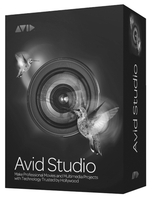
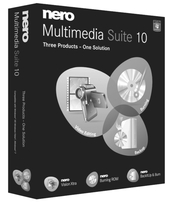
Figure 72-2 The DVD authoring software programs used by most consumers runs in the $100 or less range.
become frustrated at its inability to recognize popular file formats.
Corel’s DVD MovieFactory was just the opposite. It lacked features, but accepted virtually every codec thrown at it.
Sony’s DVD Architect Studio edition has navigation features not available in any other program in this price range. Its ability to handle external graphics, customize remote control buttons, and produce playlists makes for some nice menu building.
If you want a serious DVD authoring program with professional options in this price range, TMPGEnc offers a phenomenal amount of tools, many of which are only found in programs that cost twice as much. There is a moderate learning curve here, though.
$200–$4000
If you’re willing to step up to the next price range, Roxio DVDit 6 Pro is the way to go. The interface is one of the most pleasant to work with, offering a logical workflow even for the most advanced of options. It is a bit of a shame that Roxio does not offer trial versions of any of its current DVD software though, and we find it interesting that they charge more than double the cost of the program for the Blu-ray version. The Pro and HD versions both support AC-3.
Another program worthy of note in this price range is DVD-lab PRO2. It’s kind of
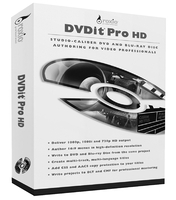
Figure 72-3 Higher priced programs usually offer more manual features.
hard to put this program in the same class as the others. DVD-lab PRO2 sacrifices any semblance of a kind of simple interface and replaces it with the power to author truly intricate and complex DVDs. If you wanted to make a DVD game, or a DVD that changes based on user input, this would be the ideal program. It does, however, lack amenities like drag and drop support, and does not accept many common codecs.
$400 and Up
All of the other high-end authoring tools would probably fall into the same price range as DVDit 6 Pro. . . that is if they were offered as stand-alone products. Unfortunately, they only come as parts of
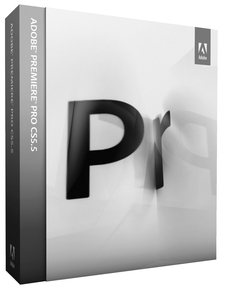
Figure 72-4 Working in a suite like those offered by Adobe or Apple cost more, but include other programs along with the DVD authoring. These authoring programs have all the whistles and bells you’d use for your DVD publishing form custom menus to copyright protection management.
larger, and much more expensive packages. If you work in Final Cut Pro for example, then you know how good DVD Studio Pro 2 is. It offers virtually identical abilities as DVDit 6 Pro.
The same can be said for Adobe’s Encore. It’s a cornucopia of professional authoring options if you’re willing to shell out for Premiere Pro or the CS5.5 Master Suite. The benefit, however, is the tight integration with all of Adobe’s other products. The latest version of Encore is 64-bit only. 32-bit users are just plain out of luck. We understand that 64-bit operating systems are superior, but this still seems a little premature. While other companies should be moving to 64-bit eventually, this makes Encore out of anyone’s ability unless they have a newer operating system. (Computers have been shipping for years with 64-bit capable processors. You can verify your system’s capabilities with the Intel Processor Identification Utility.) However, once you go this route you’ll enjoy the speed and stability 64-bit offers.
The Pro version that comes with Sony Vegas is where DVD Architect really shines. Blu-ray support, copy protection, multiple tracks of all types and more all round out an already feature rich product. The interface retains the same lackluster style though.
Free With a Price
So how did the no-cost offerings hold up? Well, to be honest, mostly as expected. DVD Flick is an enjoyable program with an easy to understand interface. Unfortunately, menu customization is almost non-existent. GUI for DVDauthor had a less friendly interface. It did, however, offer some interesting options not seen in many other programs, like auto-shutdown upon completion. Its biggest drawback is that it only accepts MPEG-2 video, forcing the user to use external transcoders.
These programs aren’t really comparable to the polished offerings of the popular consumer products, but many of these projects build upon each other as well, so it’s conceivable that you could put together a feature rich package eventually, but it’s not recommended.
The Quest Continues
It’s quite surprising, but there’s still no authoring system out there that will ever satisfy all the features you need, unfortunately, when it comes to DVD authoring, “one size does NOT fit all!” We’re all shooting to different formats, and our DVD needs differ greatly, too.
If you want something simple, there’s plenty of choices all with a variety of options. If you’ve obtained Encore, DVD Studio Pro, DVD Architect or DVDit as part of a package, there’s no reason you shouldn’t stick with those, as they’re all about equal (though, if you have the Avid-bundled standard DVDit, we do recommend upgrading to Pro). In the end, each one has its shortcomings, however small they may be. There are many more we didn’t have room for, so let this be your starting point, and go for the features you need most. If you weigh the options, you can walk away satisfied.
